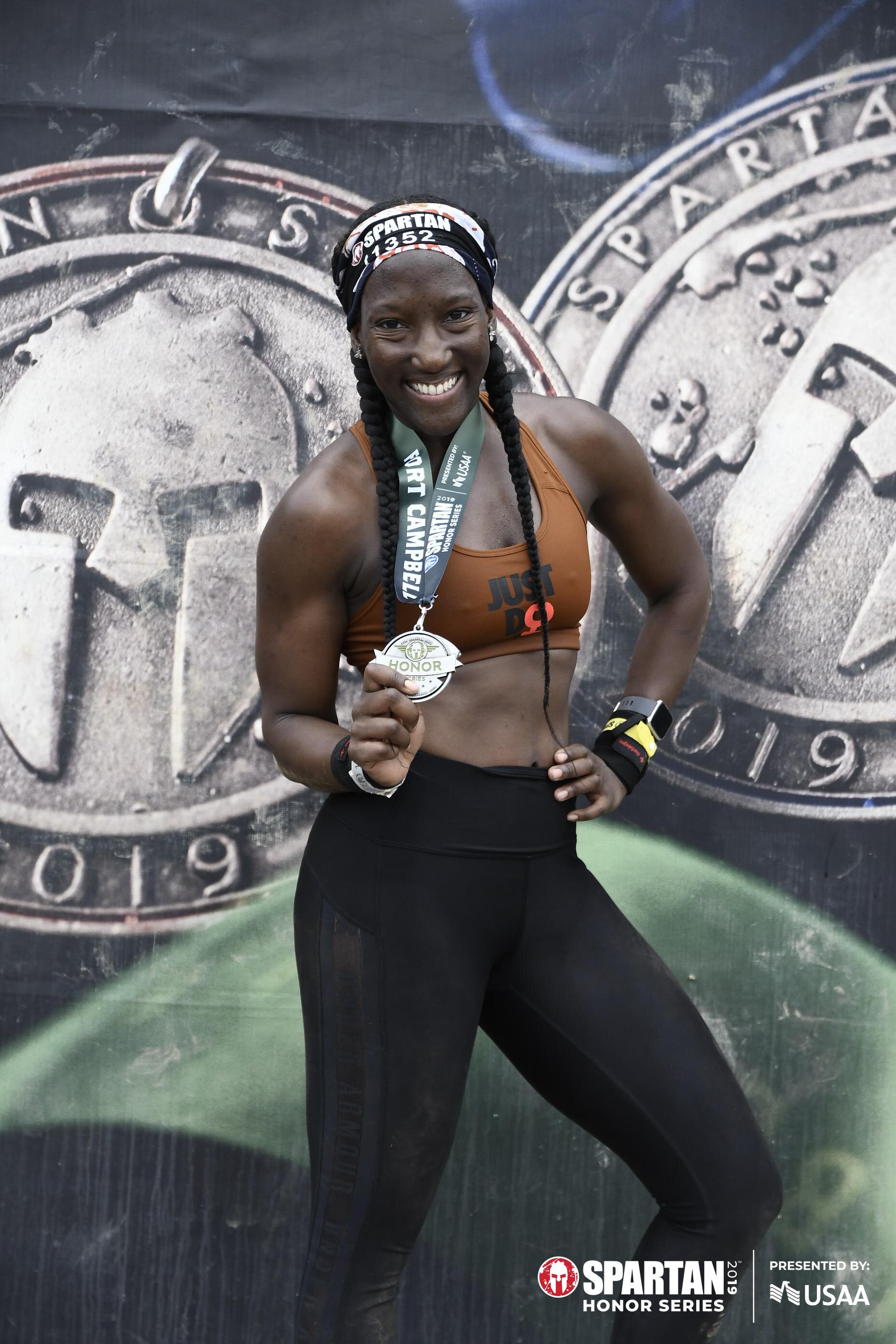From Spartan Strong to Powerful Athlete
I just completed my third Spartan Race.
When I first started my fitness journey a few years ago, I never thought I’d grow to not only run an obstacle course, but think it was fun. Who am I?
My first race was the Spartan Sprint last fall. I decided this year I wanted to go for the Spartan Trifecta. The Trifecta consists of completing the Spartan Sprint 4-mile race, Spartan Super 8+ mile race and Spartan Beast 13+ mile race in one year. I’ve since decided not to do the Beast this year, but I am still very proud of my “Super” accomplishment. I also have a lot more insight into training.
All of this must be prefaced with the fact that I do not love running. I think the idea of hitting a trail with headphones and just the scenery around you sounds…well, serene. However, I’d rather lift weights or work it out in a group fitness setting any day.
My first race took place outside of Nashville at Milky Way Farms. I focused on endurance training to ensure making it through a race would be no problem. My second race in Atlanta this spring, I focused on the technique it would take to complete what I believe to be the more difficult obstacles, like the monkey bar rigs and rope climb. This time around, I focused on running so I’d be able to tackle the extra miles with no problem.
Here’s the real deal. There was nothing wrong with the way I trained previously, as everyone has a different strategy to make it through the course. However, I can say all the strength and running made me a bit stiff as I approached my race. Because of that, I didn’t feel I was as powerful this time around. Training for a Spartan Race should mean moving in as many ways as possible. Here are a few of my thoughts for building more power:
There were four total monkey bar rigs, which included the traditional bars, twisting bars, rings and swinging bars. I did make it further this time than previous races, but I did not knock out all four.
Move like an athlete. Athletes must be quick on their feet to keep up with the pace of a game. Agility movements help improve speed, balance, and control. Training in this way tests your ability to change direction and move your feet quickly and efficiently. It helps the body to maintain proper alignment and posture during movement. The Spartan course at Fort Campbell in Nashville was a bit of its own workout due to the trail running with plenty of tree logs, roots and narrow pathways. Being able to shift directions, speed up and slow down as needed and hop over objects was necessary to sticking out this race. One of the best pieces of equipment I own is an agility ladder. I can roll it out anywhere to work on moving in different directions and varying speeds.
Embrace plyometrics. One of my goals this race was to knock out the monkey bar rigs. My performance would have been better if I’d focused more time on plyometric drills. My downfall was not having the power to drive my body forward. Plyometrics is a category of exercises that stimulates rapid muscle shortening and lengthening through a jump or explosive movement, like box jump, tuck jumps or lateral bounds.
Keep running. This was a big part of my training for my third race. I was most nervous about adding the additional miles and you never know what type of terrain you will meet on a course. It was good I headed outdoors as much as possible and ran different trails. The trail at Fort Campbell went from wooded, soft and muddy areas to rocks and gravel, then uneven grass and mulch and back again.
Move in as many ways as possible. My body was a bit tight and sore leading up to the race. My personal piece of advice is to move in as many ways as possible when training for an obstacle course. Take a dance class for fluidity, go to a new boxing studio for power, or take a yoga class for flexibility and develop measured breathing technique. The only wrong way to prepare for a race is to not prepare.
Recovery. This is important before and after the race. Two weeks before the race, it is advised you begin to taper off your training. The goal is to keep the same quality of training with a little less intensity to give your body time to recover. I waited until about three days before my race to begin tapering off. I also coached and taught my regular scheduled fitness classes right up to race day. Post-race, I kept moving. Instead of taking a day (or three) off, I jumped right back into my normal workout routine and paid for it for a full week after. Recovery is absolutely necessary to avoiding long-term injury and it is a concept I am learning to embrace more and more every day. I did schedule a post-race massage and plan to keep massages and stretch session scheduled monthly.
Did I mention I ended up taking on this race solo? I had friends signed up to go along with me, but injuries kept them out of the race this time. The camaraderie is one of the best parts of the Spartan experience. You meet people on the trail willing to give you a boost. You are motivated by the energy and common goal you share with those moving through obstacles around you. It is an empowering and enlightening experience. Most important, I had a blast out there on the trail and feel even more like my own little version of an athlete.


